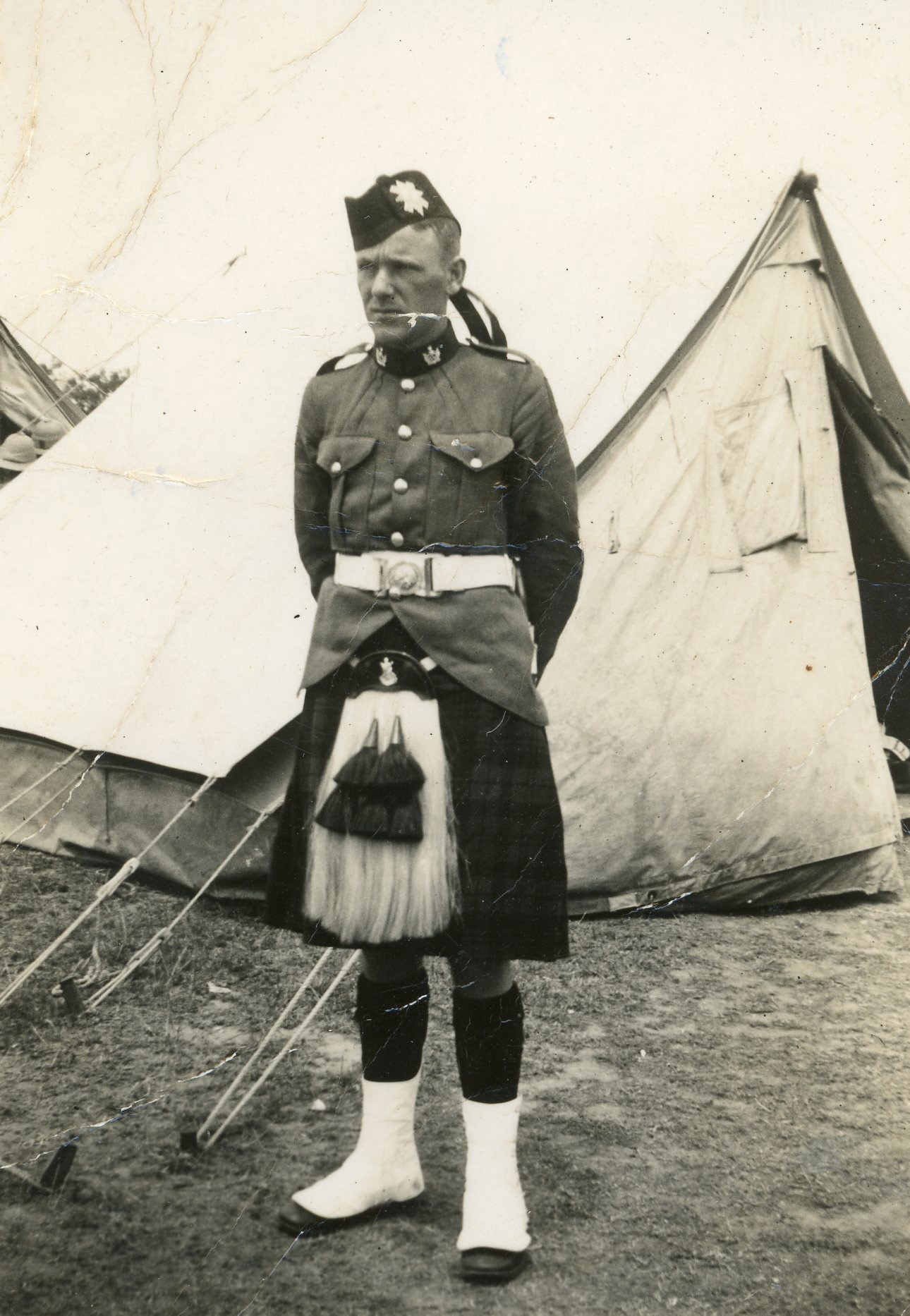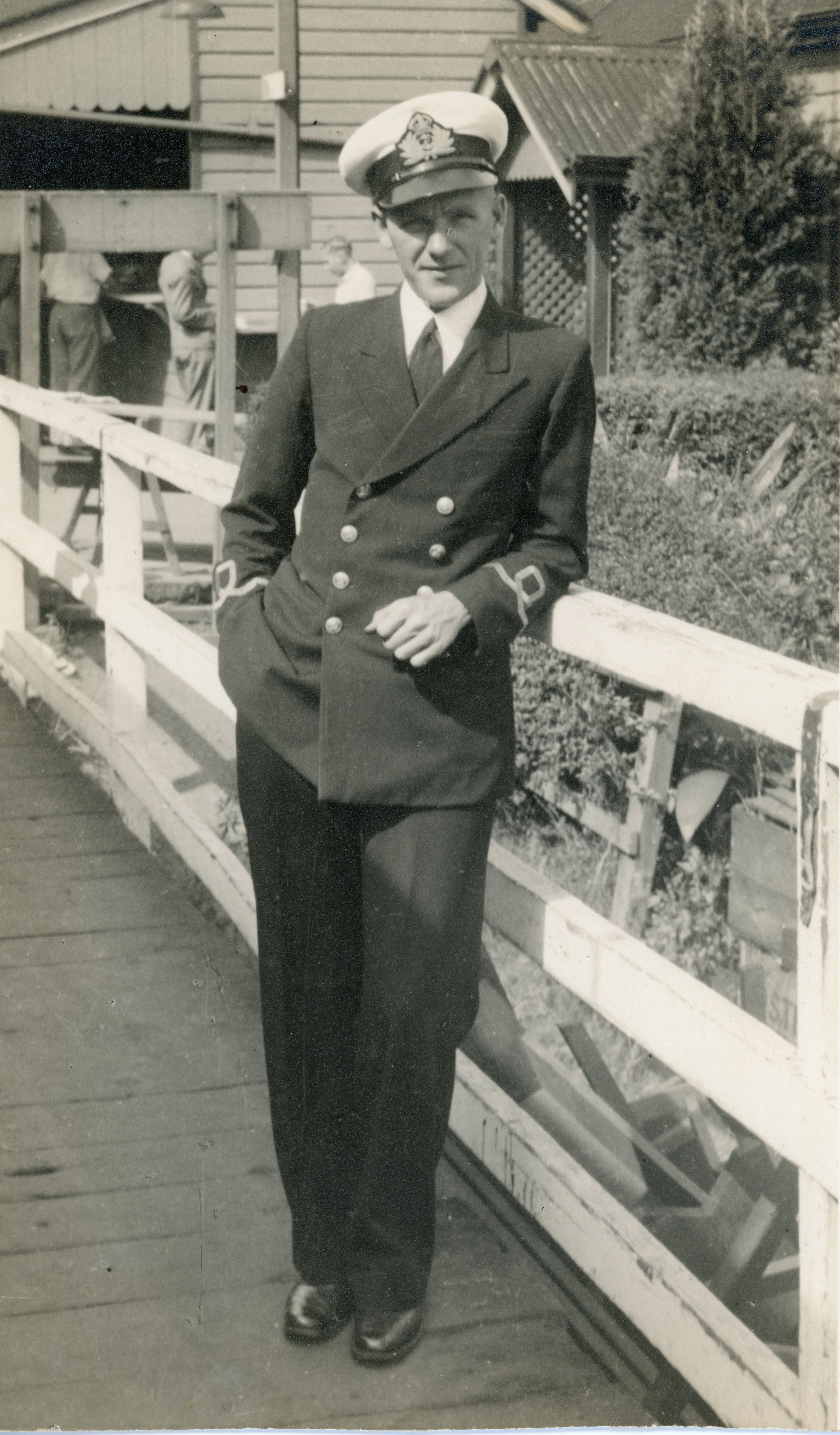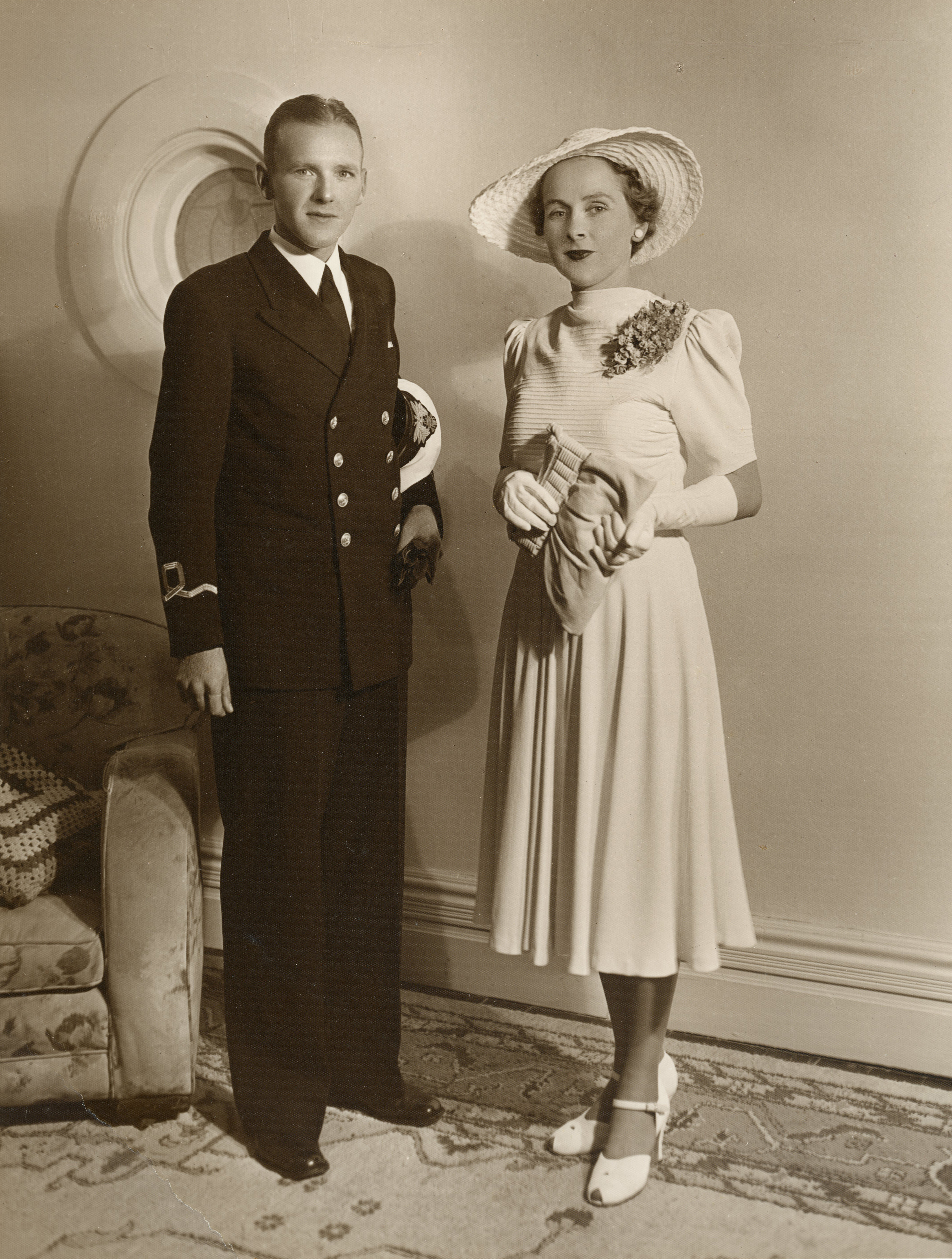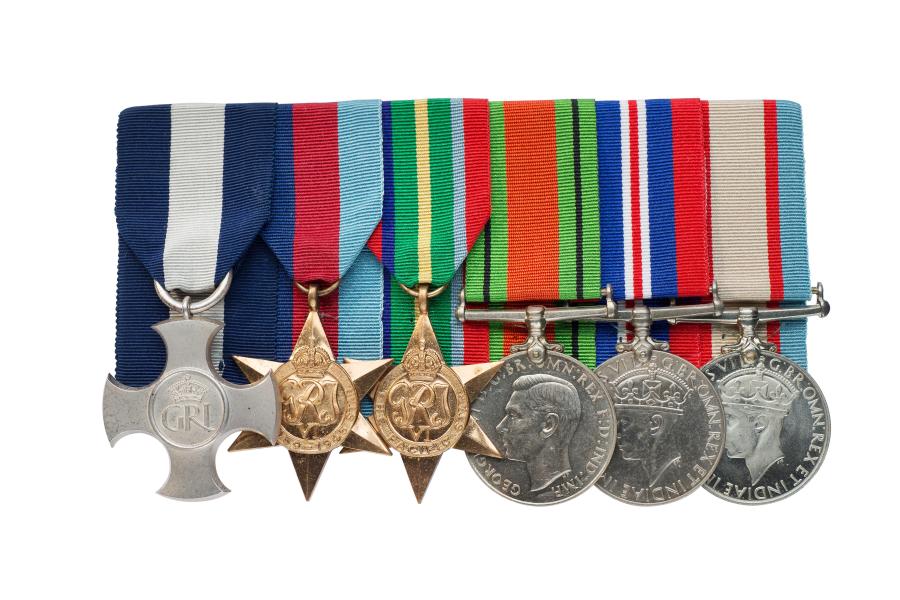SINKING A SUBMARINE
On 20 January 1942, just six weeks after the Pacific War began, the Japanese minelaying submarine I-124 was detected while attempting to attack a convoy entering Darwin Harbour. In the ensuing battle the submarine went down with all 80 crew members on board. The corvette HMAS Deloraine played a principal role in sinking it.
Manning Deloraine’s underwater detection equipment that day was 25-year-old Lieutenant Bruce Harvey. He had been a last-minute addition to the crew, but his skill with this new and largely experimental technology helped destroy the enemy craft.
Harvey, from Ashfield, Sydney, served in the 30th (NSW Scottish) Battalion while working as a clerk for an oil company. It was there that he met Cecilie Mansel-Dakyns, but their romance was interrupted by the war and Bruce’s enlistment in the Royal Australian Naval Volunteer Reserve. The couple eventually married while he was on leave in 1941.
Following the victory over I-124, Harvey was posted to Britain as an instructor. Temporary Commander Bruce Harvey was awarded the DSC for his role in the destruction of the Japanese submarine I-124 off Darwin Harbour in January 1942.
After the war they moved to Western Australia, with their three daughters. Bruce Johnston Harvey DSC died in 1970.




